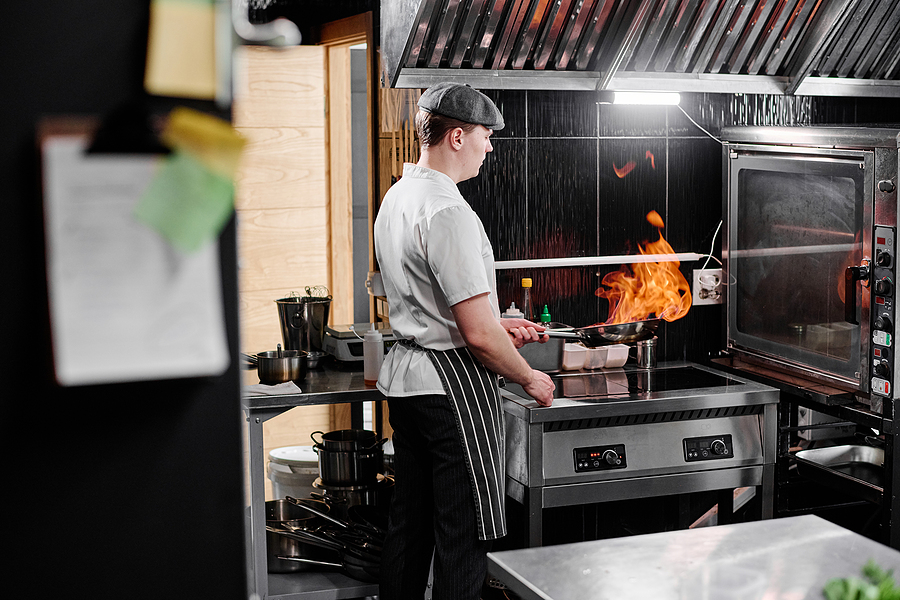Our kitchens are the heart of our home. It is where memories are made over home-cooked meals, the air fills with the comforting scents of grandma’s secret recipes, and families gather together to catch up over slices of freshly baked pies.
Yet, as cozy as our kitchens are, they also pose serious fire risks that we often overlook. According to the latest fire incident reports, cooking equipment was the leading cause of house fires and injuries in the United States. Unattended stovetops, faulty appliances, cluttered countertops – these seemingly harmless aspects of our kitchens harbor hazards that can put our safety at risk.
So, how do we enjoy all the warmth and joy our kitchens bring without compromising safety? How can we prevent the dangers of kitchen fires from turning our happy place into a site of devastation?
Top Causes of Kitchen Fires
Before exploring preventative strategies, it’s important to understand exactly what causes kitchen fires. Here are the top culprits according to fire department statistics:
Unattended cooking – It may be answering the phone, getting distracted by the TV, or falling asleep, leaving cooking food unattended gives fires a chance to start and spread. This is especially risky when frying or broiling foods, as the oil and fat can quickly heat up to their auto ignition point and burst into flames.
Faulty electrical appliances – Appliances with old or damaged wiring, bad connections, or worn-out parts can malfunction and spark fires. Some common culprits include damaged toasters, aging microwaves, old refrigerators, and entertainment systems installed too close to the stove.
Poorly maintained cooking equipment – Built-up grease, food scraps, and other debris can accumulate in ovens, stovetops, rangetops, and exhaust systems over time. These can ignite and fuel dangerous grease fires.
Flammable items near the stove – Kitchen towels, plastic utensils, food packaging – having flammable items close to cooking surfaces makes it easy for fires to spread if they’re ignited by a gas burner or hot pan.
Mishandling of cooking oil – Hot oil, especially over 350°F, can easily combust into explosive flames. Adding wet or frozen foods into hot oil can also cause splattering and spillovers that can quickly spread fires.
Electrical failures – Damaged outlets, overloaded circuits, and faulty wires behind walls or appliances lead to electrical arcing and sparks. These can ignite any nearby combustibles.
Preventing Kitchen Fires
While the statistics may seem alarming, the good news is that most kitchen fires are highly preventable when you adopt the right safety habits and prevention strategies:
- Never leave cooking unattended – Set timers and remain vigilant. If you have to leave the kitchen, even for a minute, turn off the stove.
- Keep appliances in good working order – Inspect electrical wiring and cooking equipment regularly. Replace old or damaged appliances right away.
- Clean regularly – Keep stoves, ovens, vents, exhaust fans, and behind refrigerators free of grease buildup, dust and clutter.
- Store flammables safely – Keep towels, plastics, paper goods away from heat sources. Have a “safe zone” for these items.
- Handle cooking oil carefully – Use a deep pan, don’t overfill it, and inserting wet foods slowly. Allow plenty of space for splatters.
- Avoid overloading circuits – Space out use of appliances, especially high-wattage ones. Upgrade wiring if needed.
- Keep a fire extinguisher and lid nearby – Have these ready to suppress stove and oven fires. Learn how to use a fire extinguisher properly.
- Make an escape plan – Ensure everyone knows two ways out of the home and where to meet up outside. Practice regularly.
Taking Action against Kitchen Fires
Despite your best prevention efforts, kitchen fires can still occur when you least expect them. Usually, you’ll only have seconds after a fire starts to contain it before it grows out of control. This makes early detection and swift action absolutely critical.
Here is what you should do if a kitchen fire starts:
- If the fire is small, smother it quickly with a tight-fitting lid or cookie sheet. Don’t attempt to carry a burning pan outside.
- For an oven fire, turn off the heat and keep the door closed to deprive it of oxygen. Call emergency services. Do not open the oven door!
- If using a fire extinguisher, keep your back to an exit as you discharge powder at the base of the flames.
- If the fire grows too large for you to safely handle, execute your escape plan immediately. Do not try fetching valuables or pets – just get out alive!
- Once safely outside, call 911. Give the exact address and provide details so firefighters know what they’re dealing with.
- If your clothes catch fire, remember to stop, drop and roll on the ground to smother the flames. Cool any burns immediately with cool water.
- Finally, once firefighters contain the blaze, be sure to get your kitchen wiring and appliances checked before using them again. Look for fire damage that may still pose risks.
Final Thoughts
Please commit today to learn more about kitchen fire dangers, prevention strategies, and response protocols. Share your knowledge to protect not only your own home, but also the homes of people you care about.
